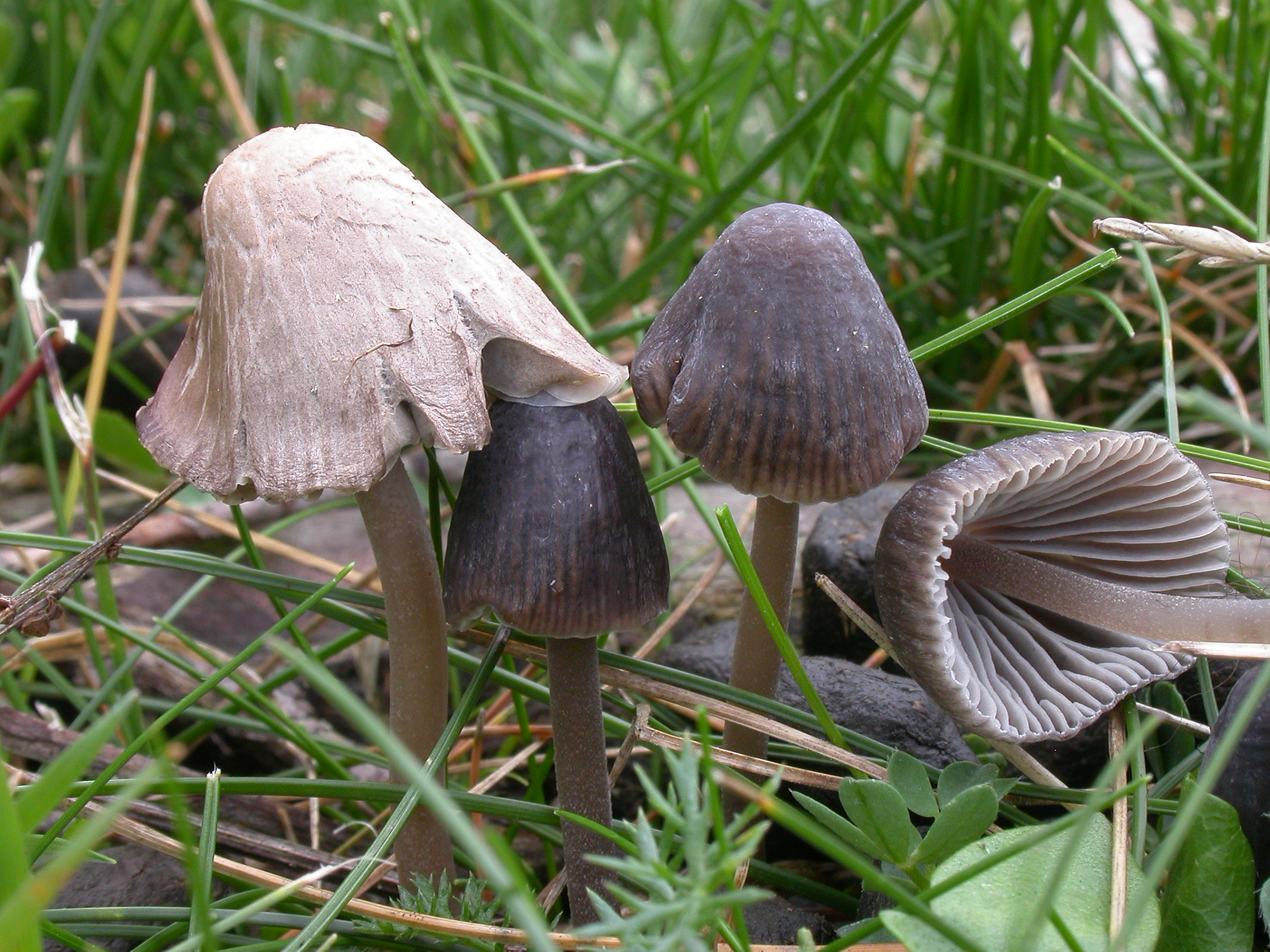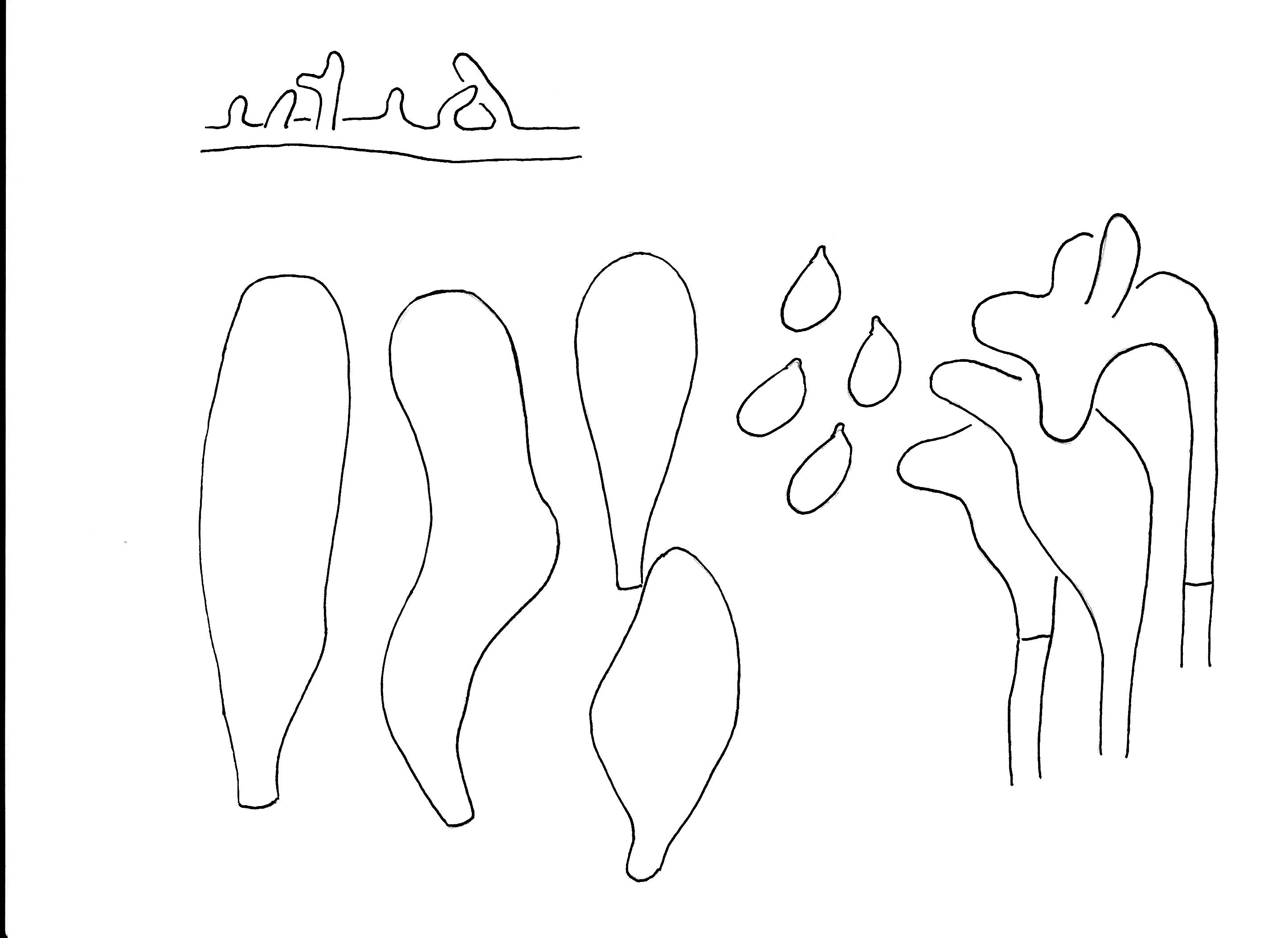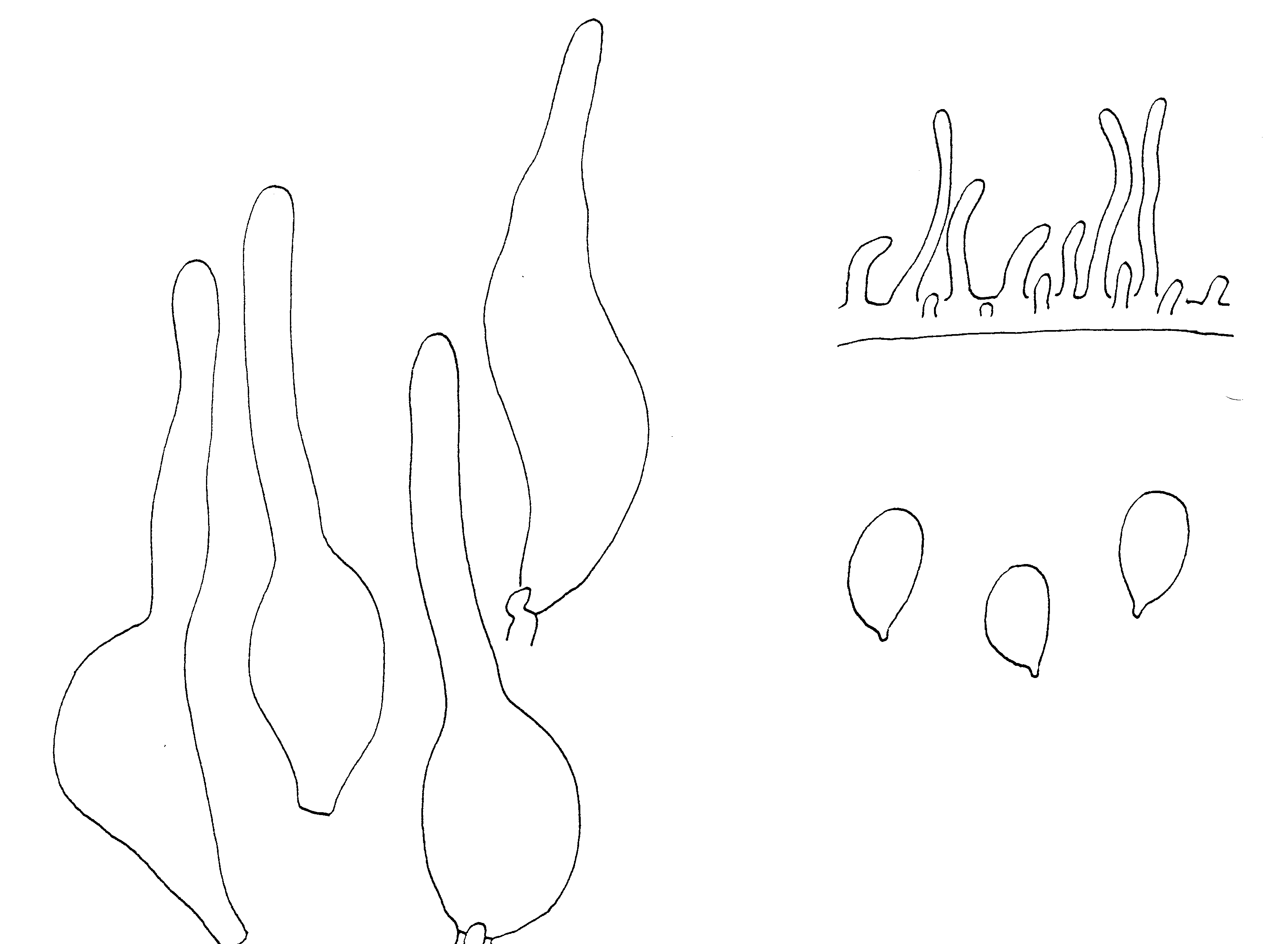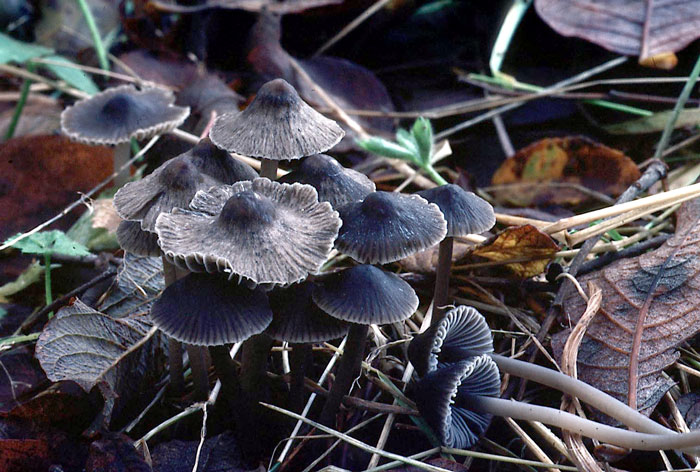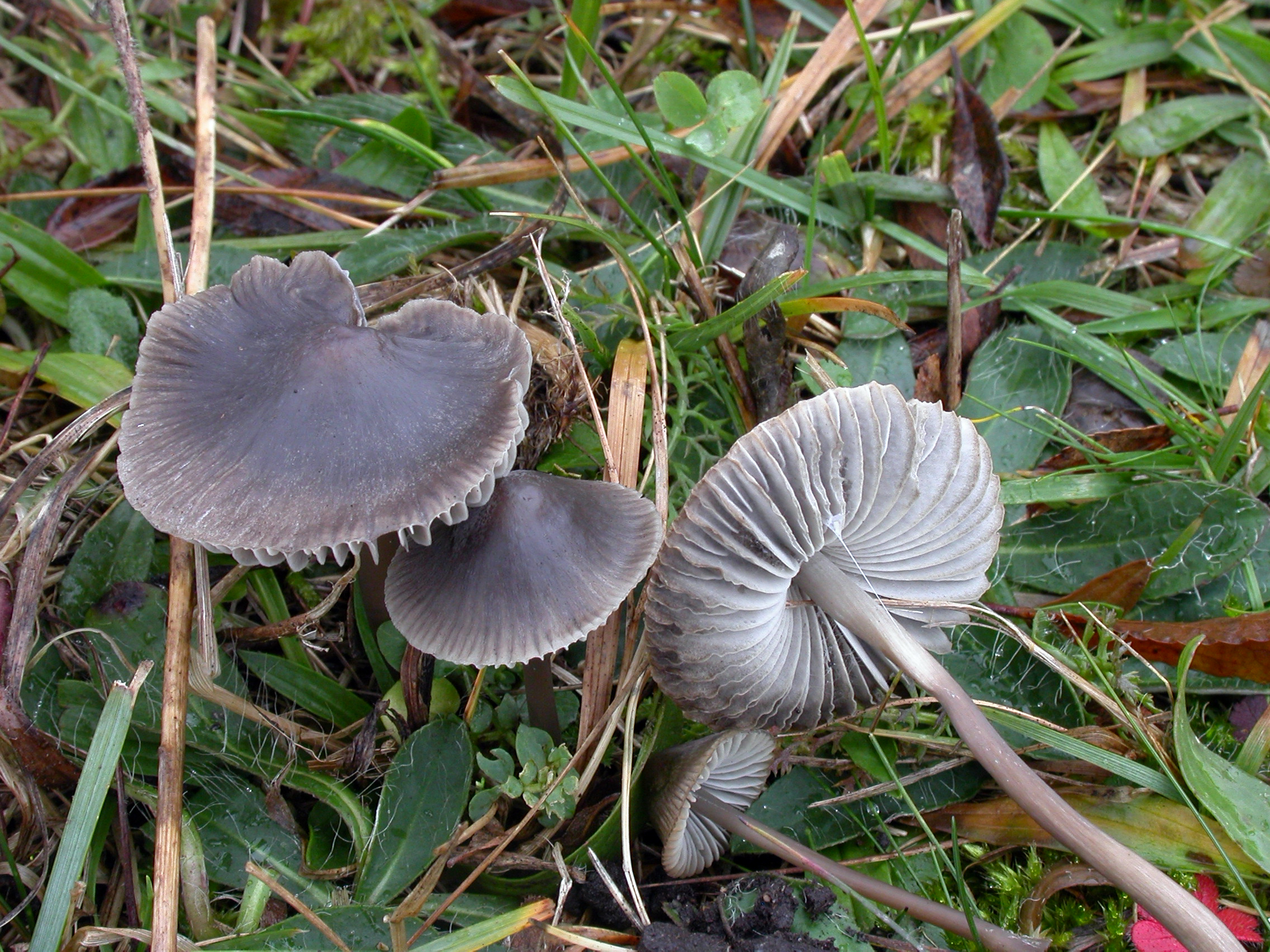Mycena leptocephala
Mycena leptocephala
Description
Hypha of the pileipellis, cheilocystidia, spores and caulocystidia.
Cap 5-25 mm across, conical or parabolical to campanulate, flattening with age, ±umbonate, translucent-striate, sulcate, pruinose, glabrescent, hygrophanous, at first fairly dark brown, often blackish brown, with whitish margin, then very dark grey to paler grey, or dark grey-brown to almost black-brown, pallescent when drying, turning grey-brown, the margin paler to whitish. Gills 14-26 reaching the stem, adnexed to fairly broadly adnate, ±decurrent with a short tooth, becoming dorsally intervenose, dark grey-brown to grey, paler with age, the edge concolorous or paler. Stem 20-65 x 1-2.5 mm, cylindrical, fragile, equal or somewhat broadened below, minutely puberulous all over, glabrescent for the greater part except at the apex, dark brown, grey-brown to grey, darker below, paler above, the apex generally greyish, but in younger specimens often bluish-black, the base densely covered with long, coarse, flexuous, white fibrils. Odour nitrous. Basidia 28-36 x 7-9 µm, slenderly clavate, generally 4-spored (but see discussion). Spores 8-11.2 x 4-5.8 µm, Q = 1.6-2.1, Qav ˜ 1.8, pip-shaped, amyloid. Cheilocystidia 27-80 x 9-19 µm, forming a sterile band, fusiform, lageniform, subcylindrical, clavate, apically broadly rounded or mucronate or gradually to more abruptly passing into a longer or shorter neck, sometimes with a few excrescences. Pleurocystidia similar, if present. Lamellar trama dextrinoid. Hyphae of the pileipellis 2.5-4.5 µm wide, covered with cylindrical, simple to branched excrescences2.5-20 x 1-2.5 µm, which may form dense masses and tend to become somewhat gelatinized. Hyphae of the cortical layer of the stem 2-2.5 µm wide, smooth or occasionally with a few coarse excrescences just below the terminal cell; terminal cells 4.5-20 µm wide, often much inflated, variously shaped and branched, usually curved outwards or constituting caulocystidia. Clamps generally present in all tissues but clampless specimens are known to occur.
Ecology and distribution
Solitary to gregarious in grass and moss in open areas or in mixed woods, or on tree stumps, on decayed and often moss-covered wood of both deciduous and coniferous trees, or on fallen branches. Spring to late autumn. Common all over the country.
